|
When you travel to Italy, there are a few choices of how to plan your accommodations, some limiting your options for meals, while others leave a lot of options open, especially if you would like to try cooking for yourselves in Bella Italia. First, there's staying in hotels, which usually (but not always) include cornetto and other pastries, jam, honey and espresso breakfast, and then eating dinner in their (typically) over priced ristorante (if they even have one). Perhaps you'll book yourself into a small and cozy Bed & Breakfast, where you normally receive an Italian style breakfast, or worse--a colazione Americana (American Breakfast)--a poor impersonation of the egg and bacon breakfasts that you are used to--picture scrambled eggs sitting out all morning, fatty, greasy bacon and the packaged, hard dry bread that Italians consider "toast". But there is a third option... staying in an apartment, house or an entire villa, or an agriturismo (a suite or room at a working farm), each with a full functioning kitchen. Yes, you can cook your own meals whenever you're inspired to do so. It's these options that afford you the most flexibility. But of course, you'll also be eating out... when you discover that little, homey, non-touristy trattoria in the back streets; having sweet pastries and espresso while standing in the local bar/tabacchi like a real Italian (remember, they are more like snack shops in Italy); and eating pizza in a ristorante tourista just because it's right across the street from the Colosseum (yes, we did it). Or perhaps you feel a need to say you had a Big Mac in Rome (don't do it!) or you just have to have a foot long at an Italian Subway. (ugh) Eh, to each his own. You might even want to check out a gigantic slice of pizza at Spizzico--where one slice is a quarter section of a whole pie--an Italian fast food pizza chain owned by parent company Autogrill, a fast food restaurant you might want to stop at while driving on the large Autoroutes in Italy. Hey, I hear their panini aren't bad. But other times you'll be buying pastries, a special blend of coffee, some fresh ricotta and honey, and buying some of those multicolored eggs with deep orange yolks (Italians call that part "red") in the mercato... just so you can sleep in a bit and make your own breakfast the nest morning. Or simply stocking up in the local market so you always having a backup plan--picnics and bread & cheese snacks on the road, or cooking at "home" with some new found authentic Italian ingredients: local pasta, tomatoes and veggies, prosciutto, cheeses, sausages, breads, wines and balsamic. We saw delicious produce and ingredients everywhere we went--even the supermarkets have amazing choices. Remember, you can do some culinary exploration while in your own Italian cucina (kitchen). Suggestion: a simple frittata with a new type of cheese, a sausage you never heard of or using those odd green tomatoes you saw at the market. And of course, there's always the breads. Chop some olives, tomatoes sprinkle with sea salt and olive oil and top off your bread for your very own bruschetta! Having a home base is a wonderful way to expand your culinary horizons while using the amazing ingredients from the region you are staying in. As a plus, if you stay at an authentic agriturismo (a working farm that also rents rooms or apartments), you might be able to take cooking classes on how to make pasta, make cheese, cook regional recipes and more. Your first day in Italy will be tiring, but as you travel toward your apartment, you will need to stop for basic supplies--if it's not to late in the day. Before booking your accommodation, ask about the kind of kitchen equipment they have for you to use (some might have a cooktop but no oven), and how much basic pantry items they keep in the cupboards. For example, in one agriturismo apartment we rented in Tuscany, they had coffee, tea, sugar, spices, salt, pepper, olive oil and even had little breads, pastries, honey and jam (the owners live there and farm the land). It was easy to have a snack the first night, make breakfast the next morning and other meals thereafter. They really had a complete kitchen and pantry. 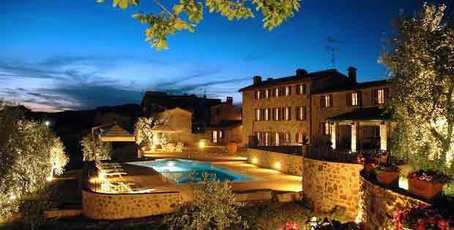 Agriturismo farm experience or just a hotel? You decide. Agriturismo farm experience or just a hotel? You decide. Beware: Phoney Agriturismos Yet, in another of the new breed of overdeveloped faux agriturismo, created by investors who don't live or work there, you will find little authenticity, no hands-on farm experiences, very little history, young and handsome or pretty smartphone-clinging staff (who live in the nearby cities), cheap tourist wine, terrible olive oil, and an overpriced on-site cafe. Everything is extra. The wine, the oil, the soap for the washer. In Mormoraia, an agriturismo we rented outside of San Gimignano, as chic and stylish as it was, they didn't have salt, pepper, coffee, tea, oil, ice trays, a cutting board or even a single good chef's knife. (The TV didn't even work--and no one seemed to care). The place produced their own wine and olive oil--but they didn't think to supply small samples for the kitchens in their apartments so guests could cook with them. These types of places are built by a recent wave of out-of-region (or foreign) developers who buy up old farms and vineyards, renovate them to look pretty as a postcard, put fancy labels on their wine and oil, but are about authentic as a Brit wearing a "Kiss me, I'm Italian" T-shirt. I really emphasize due diligence on your part in researching beforehand--and reading all the reviews of an agriturismo you're considering. If you want to cook while in Italy, make sure your accommodations can handle it. Another tip... look at the photos people post on sites like TripAdvisor. If the agriturismo looks too clean and neat, if their are no dogs, goats, pigs, or kids running around, and if you don't see photos of the actual proprietors cooking and engaging with guests, it's more than likely a phoney-Bologna imitation of the real deal. Where to Buy Food If you have your agenda well planned ahead of time, you can use a tool like Google Earth or Google Map to find places to shop in the area. Zoom into the area you will be staying in and search for "supermarket" or "supermercato". Google speaks all languages. I did this before we left and put my custom Google pin maps on my Kindle and smart phone before we left. Stop at an alimentari (literally translates as "food") or even a supermercato. Here are the types of places you can stock up:
One more thing... small towns will have alimentari and other small shops with little or no signs. Often it's difficult to tell what type of shop it is. They will have metal roll-up doors that will more than likely be closed (either partially or all the way) from 12 - 3pm. Try to do your food shopping earlier in the morning to be certain to find the shops you need open. If need be, ask someone "dove si trova la (il) ______ più vicina?", (Where is found the nearest _________?") filling in the blank with the type of shop you need. Specialty Stores
Late in the day (4-7 pm) is the best time to shop in boutiques or gift shops. A new trend in Italy is to put "-eria" at the end of a word to describe a shop. Yogurteria, Hamburgheria, Fruiteria, Disceria (for CDs), Vineria (wine), etc. 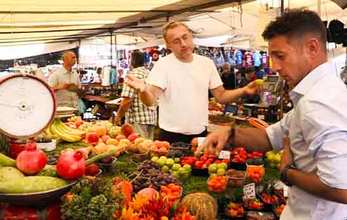 How to ask for what you need In Italy you will be dealing with the metric system... kilos, not pounds. Una etto (abbreviation of hectogram) is asking for 100 grams, 200 grams would be due etti, three... tre etti, and so on. I even asked for simple, "cento" and got 100 grams, which is about a quarter of a pound--about the amount of cold cuts for one or two sandwiches, or enough cheese for your lunch. If you want a wedge of cheese, hold out your fingers to how thick you want it sliced and say "Come questo" (like this). If you want thicker say "più spessa" (more thick), for thinner say "più sottile" (more thin). Point close to you for "questo" (this one) and point away for "quello" (that one). When thinking in kilos, think about half of what you would ask for in pounds. (A kilo equals 2.2 pounds). If you want about a pound, ask for a chilo (pronounced KEY-lo). In Italy, a kilogram is chilo. Half a kilo would be mezzo chilo. Be careful about these two... one quarter kilo is "un quarto chilo". Four kilos would be "quattro chilo". If you want to ask for something "to-go" you ask for "portare fuori" (literally, "bring out"). Remember that numbers for pricing are written a bit differently. Decimal points and commas are switched around... a leather jacket can cost €1.000,00 but never would cost €1,000 (that would be one Euro with an extra zero). A house might cost €1.000.000,67 (one million plus 67 cents... don't know what the 67 cents is for). A gelato might cost €3,50 (without the decimal point). Pantry Staples
I'll do a separate post on numbers soon. You definitely need to know how to say and hear numbers when shopping, in hotels, restaurants, taxis and trains. I hope you'll get a chance to do some food shopping in Italy... and don't miss the Italian supermarket experience. Soak in the differences, try to translate the names on boxes and cans, and enjoy trying to figure out those odd veggies... 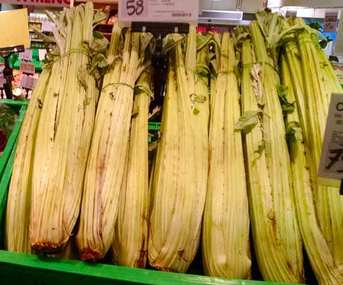 It's called Cardi, or Cardoon and tastes like artichokes It's called Cardi, or Cardoon and tastes like artichokes Magia bene! --Jerry Finzi Please, stop by our SURVEY and spend 60 seconds telling us how we could make our blog better! Grazie! You can also follow Grand Voyage Italy on: Google+ StumbleUpon Tumblr Copyright 2016 Jerry Finzi/Grand Voyage Italy, All rights reserved
0 Comments
Your comment will be posted after it is approved.
Leave a Reply. |
Categories
All
Archive
June 2024
|


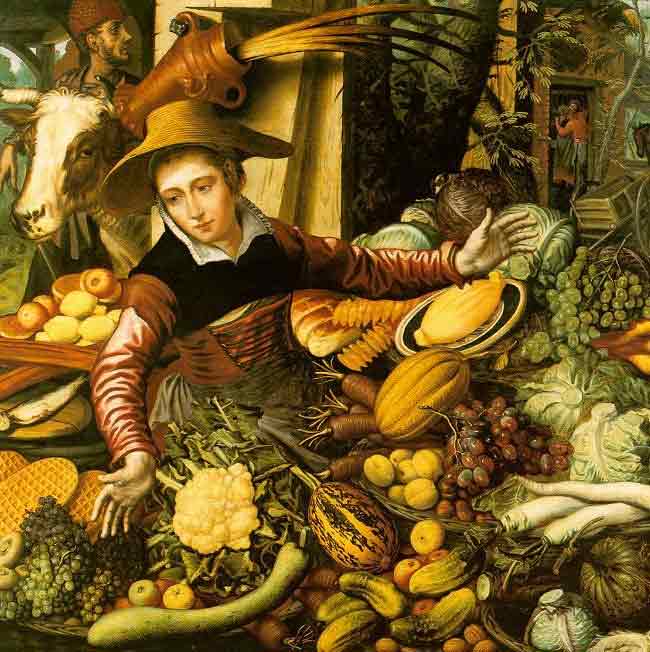
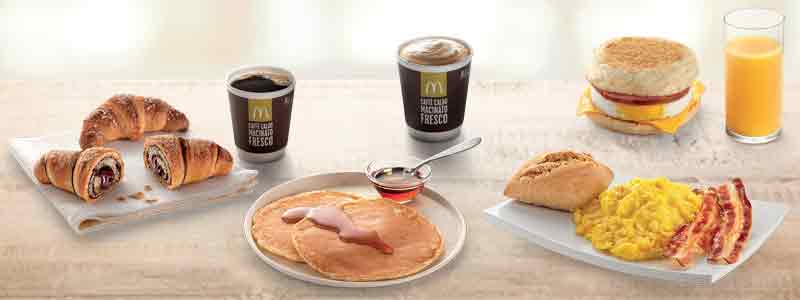
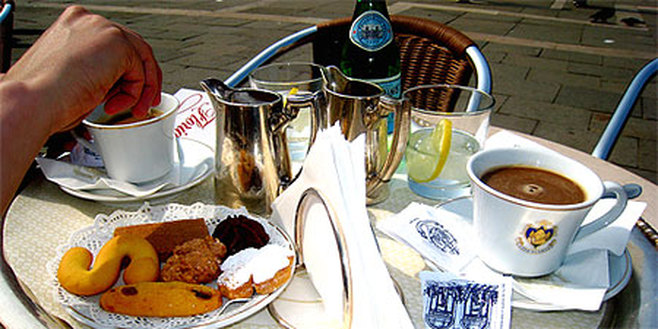
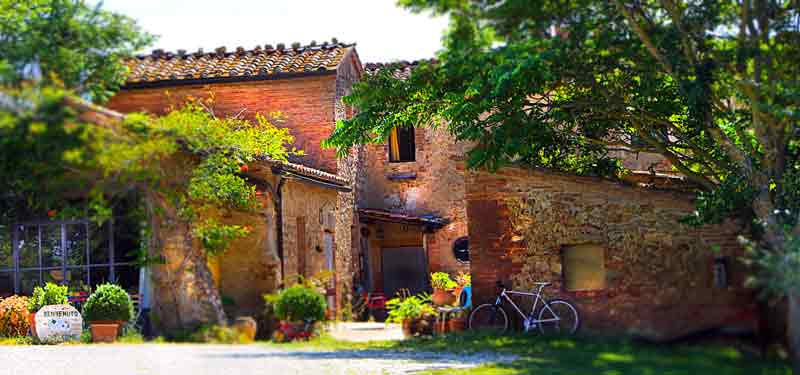
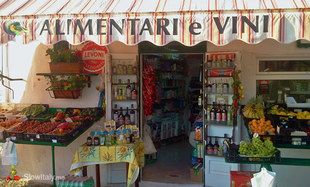
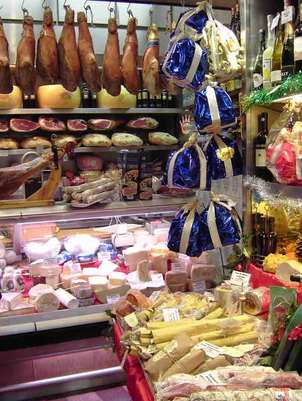
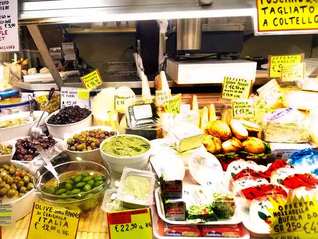
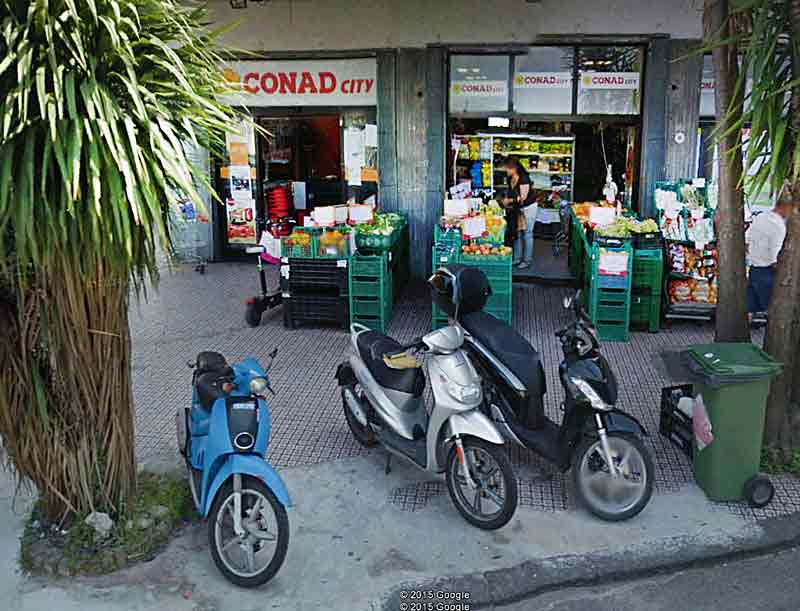
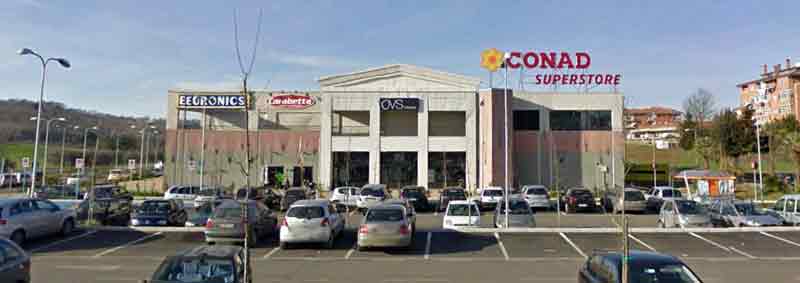

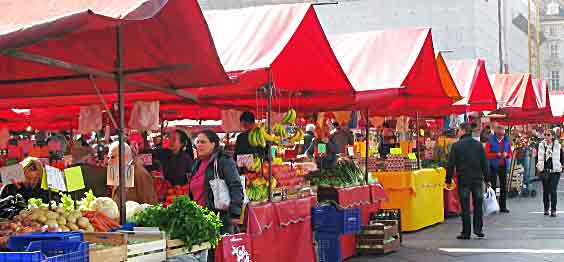
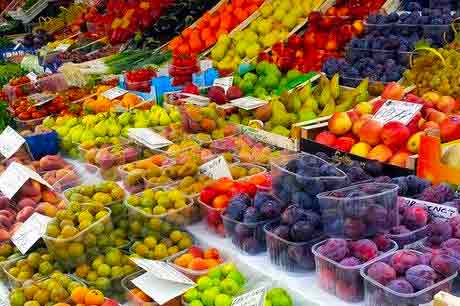
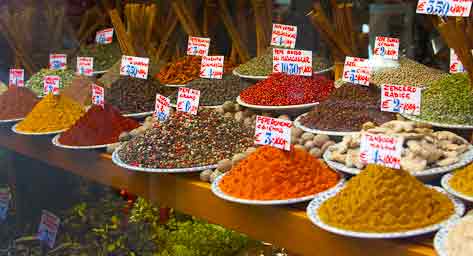
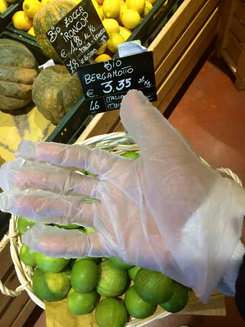
 RSS Feed
RSS Feed
